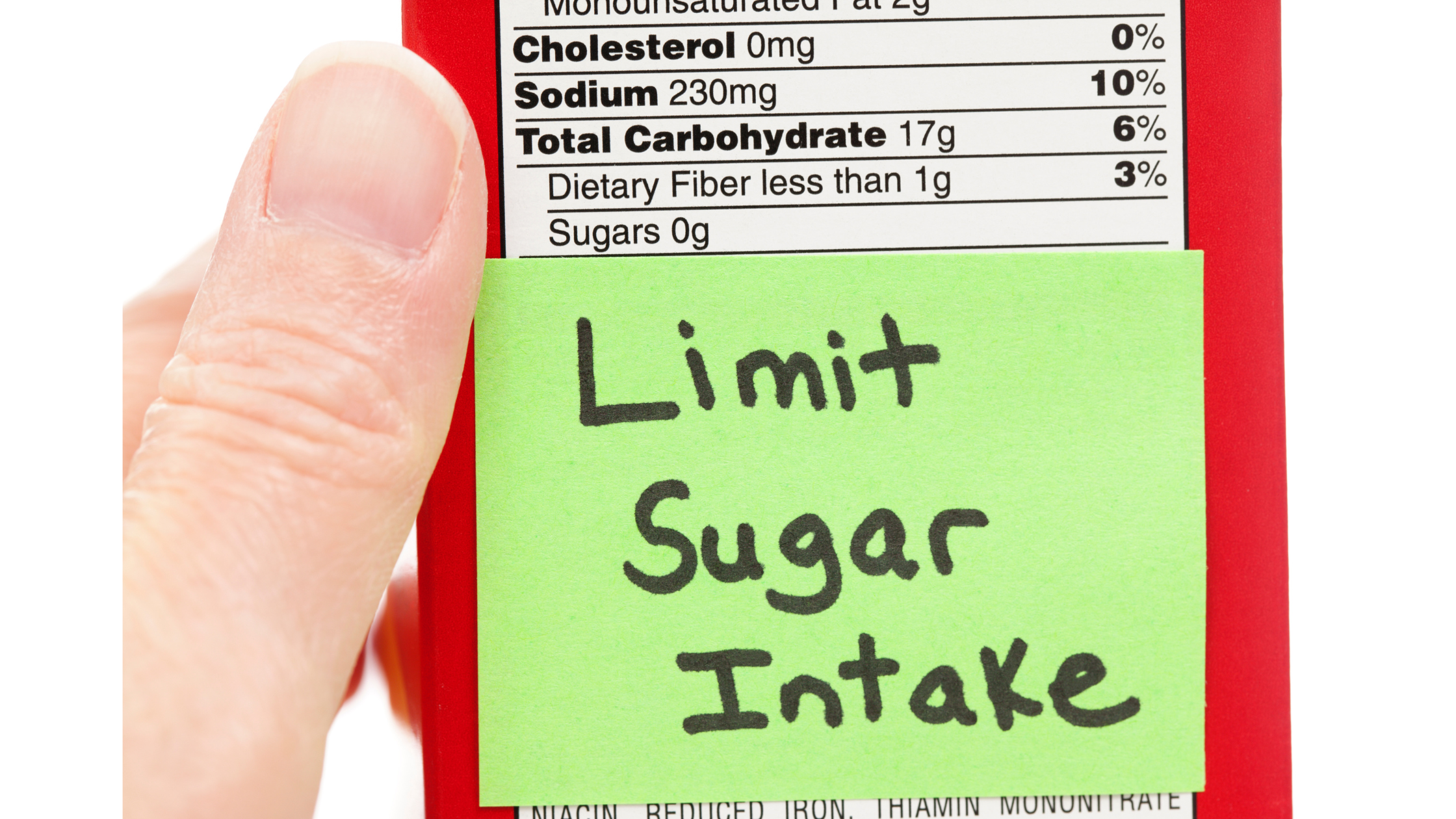Discover the recommended daily sugar intake and learn how to identify hidden sugars in your diet.
Understanding the recommended daily sugar intake
Understanding the recommended daily sugar intake is crucial for maintaining a healthy lifestyle. According to the World Health Organisation (WHO), the recommended sugar intake for adults is no more than 6 teaspoons or 25 grams per day. That includes sugar from natural sources and from added sugars. Lower limits apply for children and teens based on their calorie needs. Exceeding these limits can have detrimental effects on our health.
Consuming excessive amounts of sugar can lead to various health issues, including weight gain, obesity, type 2 diabetes, heart disease, and tooth decay.
It's important to be mindful of our sugar intake and make informed choices about the foods and drinks we consume. With sugar hiding in so many packaged foods, staying within these limits can be challenging without knowing where to look.
The impact of excessive sugar consumption
Excessive sugar consumption can have a significant impact on our overall health. When we consume too much sugar, our bodies convert it into fat, which can lead to weight gain and obesity. Additionally, sugar can cause inflammation in our bodies, which is linked to various chronic diseases like heart disease, type 2 diabetes, and certain types of cancer.
Moreover, consuming sugary foods and drinks can lead to a rapid increase in blood sugar levels, followed by a sharp drop, resulting in energy crashes and cravings for more sugar. This cycle can negatively affect our mood, energy levels, and overall well-being.
Identifying hidden sugars in your diet
One of the difficulties of cutting back on sugar is recognising where it may be lurking beyond just sweets, desserts and sugary drinks. Many processed foods contain added sugars that are not so obvious. The best way to identify hidden sugars is to carefully read nutrition labels. Ingredients are listed in order of weight, so if sugar is one of the first items, the food likely contains significant added sugars.
Some names for added sugars to be aware of include corn syrup, high fructose corn syrup, brown sugar, honey, agave nectar and fruit juice concentrates. Look out for any word ending in 'ose,' as these are all forms of sugar (i.e. dextrose, sucrose and maltose). Knowing these terms can help you make informed choices.
Additionally, be cautious of foods labelled as 'low-fat' or 'fat-free,' as they often contain added sugars to compensate for the reduced fat content. It's important to note that one teaspoon of granulated sugar typically contains approximately 16 calories. However, it's important to recognise that these calories are considered to be 'empty calories' since sugar provides little to no nutritional value.
Being aware of common sources of hidden sugars, such as flavoured yoghurts, breakfast cereals, sauces, dressings, and even some seemingly healthy snacks, can help us make healthier choices and reduce our sugar intake. Try seek out products that say 'No Added Sugar' and 'Naturally Sweetened' (or you could be consuming 'artificial' sweeteners without knowing).

Tips for reducing sugar intake
Reducing sugar intake can be challenging but is crucial for our overall health. Here are some tips to help you cut down on sugar:
1. Limit sugary drinks: Replace sugary beverages like soft drinks, fruit juice, and energy drinks with water, herbal tea, or infused water.
2. Choose whole foods: Opt for whole fruits instead of fruit juices or processed snacks. Whole fruits contain natural sugars along with fibre, which helps slow down sugar absorption.
3. Read food labels: Pay attention to the sugar content in packaged foods and choose options with lower sugar content. Aim for foods with no more than 5 grams of sugar per serving.
4. Cook at home: By preparing your meals at home, you have control over the ingredients and can reduce the amount of added sugars in your dishes.
5. Find healthier alternatives: Instead of reaching for sugary treats, satisfy your sweet tooth with fresh fruits, dark chocolate with a high cocoa percentage, or homemade desserts using natural sweeteners like Lakanto Monkfruit Sweetener.
Remember, small changes can make a big difference in reducing your sugar intake and improving your overall health.
The benefits of limiting sugar in your daily life
Limiting sugar in your daily life can have numerous benefits for your overall health and well-being. By reducing your sugar intake, you can:
1. Maintain a healthy weight: Excessive sugar consumption is strongly linked to weight gain and obesity. By limiting your sugar intake, you can better manage your weight and reduce the risk of obesity-related health issues.
2. Improve heart health: High sugar intake is associated with an increased risk of heart disease. By reducing your sugar consumption, you can lower your blood pressure, improve cholesterol levels, and decrease the risk of heart disease.
3. Stabilise energy levels: Consuming too much sugar can lead to energy crashes and fluctuations in blood sugar levels. By limiting your sugar intake, you can stabilise your energy levels throughout the day and avoid the dreaded energy crashes.
4. Enhance dental health: Excess sugar consumption is a leading cause of tooth decay and cavities. By reducing your sugar intake, you can protect your teeth and maintain better dental health.
5. Reduce the risk of chronic diseases: Excessive sugar consumption is associated with an increased risk of developing chronic diseases such as type 2 diabetes and certain types of cancer. By limiting your sugar intake, you can lower your risk of these diseases and promote long-term health.
Overall, limiting sugar in your daily life can have a positive impact on your health, both in the short term and the long run. Start making healthier choices today and experience the benefits for yourself.
To learn some tips on maintaining a sugar-free diet check out our blog here:
Regain Your Resolution Momentum: A Guide to a Sugar Free Diet
